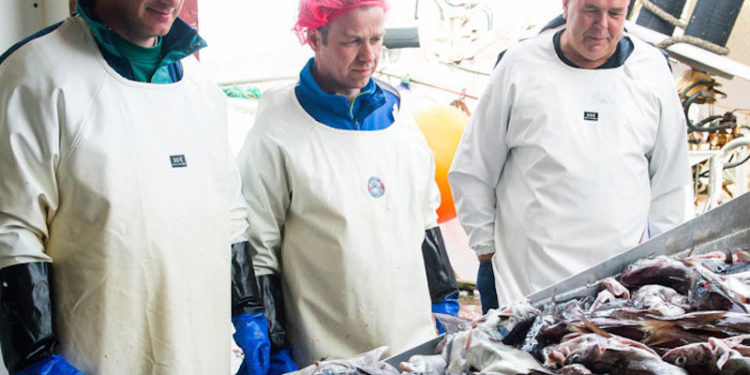The quality of the cod supplied by the coastal fleet, has improved in recent years, according to research by Nofima carried out by Sjurdur Joensen, Torbjørn Tobiassen and Nofima head of research Bent Dreyer.
Nofima has for several years carried out catch landing inspections in Norwegian ports, examining cod quality as the fish is landed, and its findings are that quality has been improving over the past few years.
The researchers’ findings are that 65% of landings are good quality, 10% are lower quality and 25% are poor. This indicates that there is room for improvement and fish caught with seine nets, jigging reels and longlines consistently show the best results.
‘The most common failing is a lot of blood in the muscle due to lack of bleeding, or because the fish are dead before bleeding. This means that the fish muscle is red, instead of white, as a good fish fillet should be,’ the researchers report, commenting that incorrect bleeding is the most common problem.
‘It is obviously also true that natural variables will affect the quality. Weather conditions and tides will always give a variation in quality. And when cod have surplus of food, such as herring, it is harder to maintain good quality. The quality work is important and our findings suggest that this has improved in recent years.’
The Nofima researchers suggest that to improve quality, daily catch or landing limits could be set for each vessel, with approved amounts that could be taken per haul or per day, while facilities on board could be improved to streamline the workflow, making it possible to stun, bleed and chill the fish in a continuous process.
They recommend that work with ‘gentle’ gears should be continued, and that automated quality assessments could be performed as the fish is landed, overcoming arguments over what is good or bad quality. An award for the best quality is a further option.
‘Not all reduction in quality due to the crews’ handling,’ they point out. ‘The weather has been bad in January and cod have grazed heavily on herring – and these are issues that affect quality negatively.’









